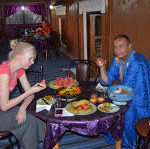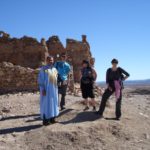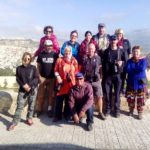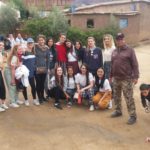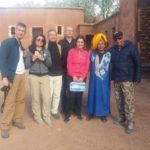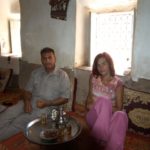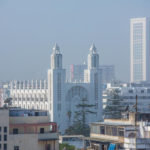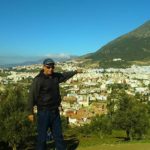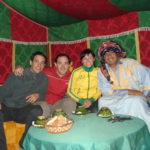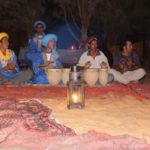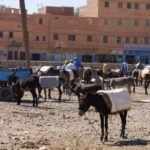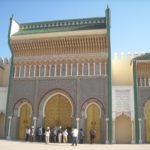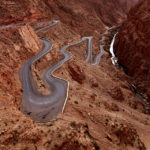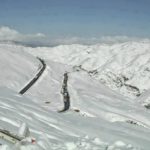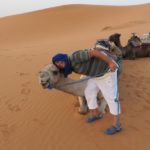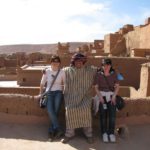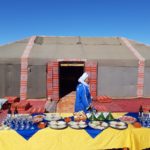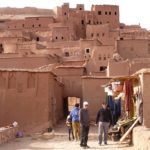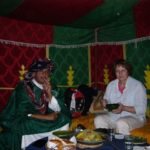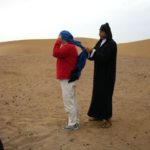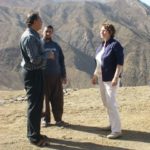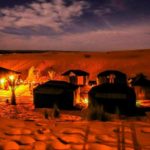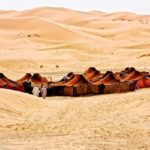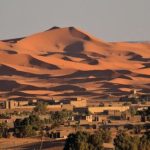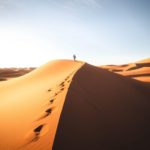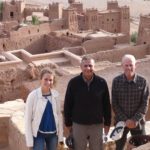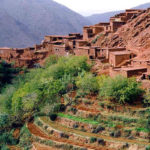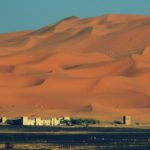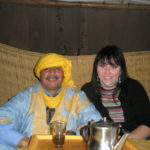Casablanca/Rabat/Fes/Chefchouen/ Meknes/Volubils
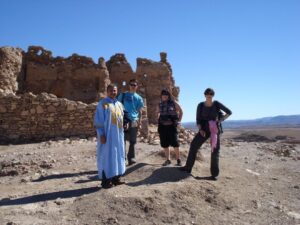
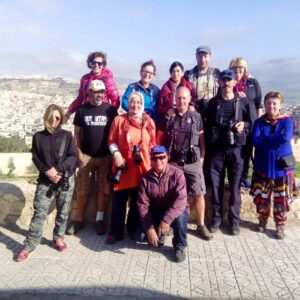
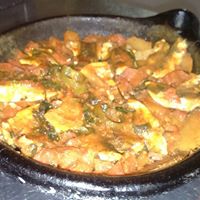
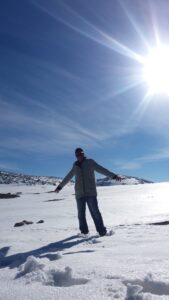

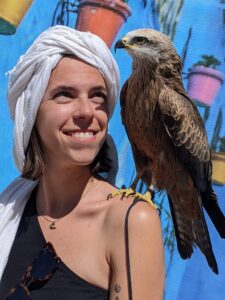
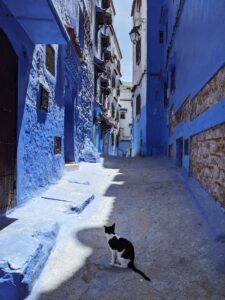
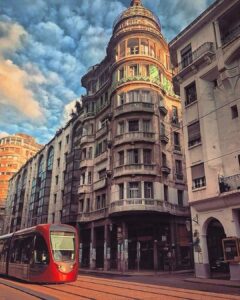
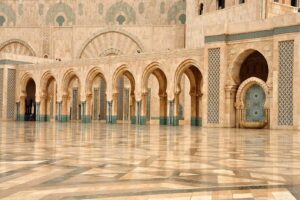
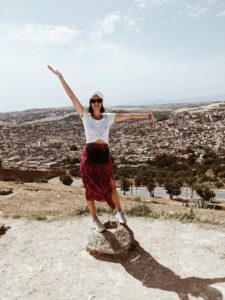
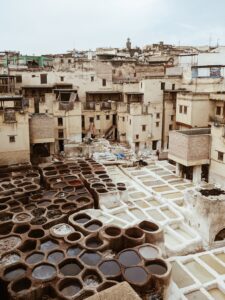
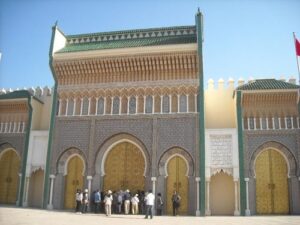
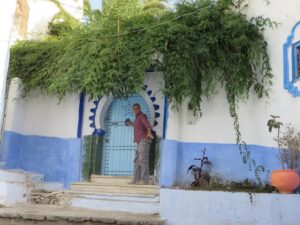

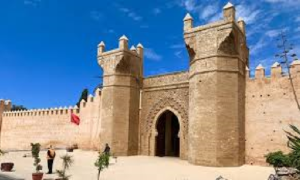
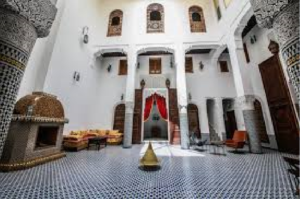
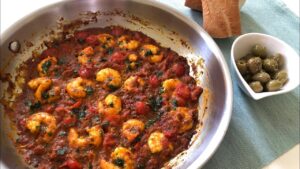
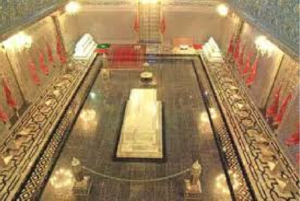
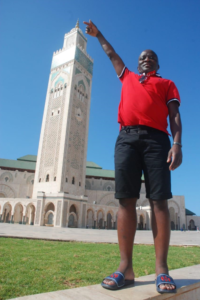
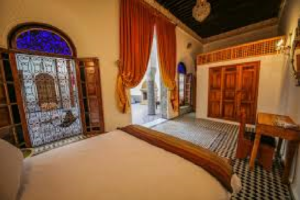
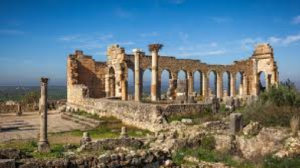
Program
Overview
Casablanca and its pretty mosque ; Rabat – the Capital – and its beautiful monuments ; Fes the oldest
imperial city and spiritual capital of the kingdom ; Chefchaouen the blue pearl; Meknes and its palaces ; the
ruins of the capital of Rome in North Africa … and many more other happy surprises. It’s going to discover
the multi-cultural facets of Morocco.
What To Expect :
1 st Day : departure at 7h00a.m
A.- CASABLANCA VISITS
1 Hassan II Mosque : Built on the sea, translation of the Coran verse that proclaims God’s throne was
built upon water. The mosque is a truly marvelous piece of architecture. Huge monument, it can
accomodate 25.000 worshipers inside and 80.000 more outside. The founder, King Hassan II, desired for
the city to be endowed with a large, fine building of which it can be proud until the end of time. The
mosque’s most exquisite examples of Moroccan craftsmanship are the blankets of zellij, some designs more
than 10m high. The mosque is one of the world’s largest.
2 Casablanca Rick’s Café : the spirit of the movie Casablanca is alive and well in downtown. Madam
Rick, an American woman who had lived in Morocco, had restored a multilevel former medina residence to
resemble the era depicted in the movie, dominated by a central courtyard with its authentic 1930’s Pleyel
piano.
3 Place des Nations Unies : or United Nations square in some planes : administrative center of
Casablanca with very beautiful buildings designed in the 1920’s by a french architect. The square is
bordered by the Wilaya ( main government office ) flanked by a tower with clock; the courthouse; a
beautiful musical and luminous fountain (at night) around which hundreds of pigeons come to eat the
grains offered by the visitors and drink the fountain water.
B.- RABAT VISITS
4 Chellah necropolis : it is both a Roman ruin and Islamic burial place. As the roman city of Sala Colonia,
it was a bustling trading post of the empire’s southernmost colony from A.D 40 onward, and was one of the
lst to eventually sever links with the empire.
5 Mausoleum of Mohammad V : The Hassan tower & mausoleum of Mohammed V : Hassan Tower or
Sawm’at Hassan in Arabic, referring to the significant minaret shaft following the special Moroccan and
Spanish style of architecture of the same time. The minaret was projected to be the largest of its type of all
time around the world, yet – unfortunately – the construction processes stopped suddenly following the
sudden death of al-Mansur in 1199.
6 Kasbah of Oudayas : The Oudaya Kasbah is a haven of tranquility, with its flower-filled little streets,
Andalusian garden, and Moorish café. Referred to also as Kasbah of the Udayas, the Oudaya Kasbah is one
of the most unique sites in Morocco and is the first milestone of the city of Rabat. It’s located at the mouth
of the Bou Regreg River, opposite the city of Salé, in Rabat, Morocco. UNESCO recognized the significance
of the Oudaya Kasbah and added it to the World Heritage Tentative List in 2006.
First night in a sumptuous Riad in the Medina of Fes El Bali
2 nd Day : departure at 9h00a.m
C.- FES VISITS
Fes is the spiritual heart of Morocco and is the most ancient, and indeed the greatest, of the country’s
imperial cities. It’s one of the undisputed highlights of any visit to Morocco. Within the walls of its Medina,
Fes Al Bali (Old Fes), lies the world’s largest intact medieval city. More than 9,500 narrow streets and dim
alleyways wind endlessly up and down, around and around, crammed with people, music, noise, and
smells. Whether arriving from within Morocco or elsewhere, nothing can prepare you for this assault of the
senses.
7 Bounaniya Medersa : As a theological college and dormitories built by the Merenid dynasty, Bouaniya
Medersa is a group of buildings built between 1350 and 1356 by Sultan Abou Inan. It simultaneously
functioned as both an educational institute and as a congregational mosque, and accommodated shops and
a large public latrine along the front façade. Zellij, carved wood and panels of stucco, originally a mix of
plaster and egg whites, finely carved with Coranic verses, decorate every available surface of the courtyard.
Wood mashrabiyya screens separate the marble-paved courtyard from the arcaded corridors leading to the
student rooms.
8 Chouwara Tannery : a picture straight out of medieval times, The Chouara Tannery is the larges and
busiest of the four traditional tanneries still operating in the medina. Sheep, goat and cow skins are cured,
stretched, scraped and dyed in numerous honeycombed earthen pits in a process that is still as manual as
when it began in the 1th century upon the decline of Cordoba.
9 Karaouiyine Mosque : and University : the most important mosque in Morocco, and one of the oldest
university in the world, it was built in 859 by Fatima Al Fihriya, the daughter of a wealthy immigrant from
Kairaouane (Tunisia) and by the 10th century had become the congregational mosque of the Karaouiyine
quarter of the medina. Surrounded by medersas, it became a major intellectual center in medieval
Mediterranean.
10 Fes Jdid : At the beginning of the 14th century, Fes’s Jewish community was relocated to an area
known as the Mellah in the Merenid-built Fes Jdid (New Fes). The concentration of the community’s skills –
and wealth led to prosperous neighborhood of multistory houses with large interior patios and baconies
hanging over the street, many of them decorated in the stucco and zelij designs from the jew’s Andalusian
heritage. Close to the area, the royal palace of the King of Morocco
Second night in the same sumptuous Riad in the Medina of Fes El Bali
3 rd Day : departure at 8hOOa.m
D.- CHEFCHAOUEN VISITS
Chefchaoun’s medina is one of the most rewarding in Morocco to explore. It’s sufficiently
compact enough to not get lost, and is exceptionally pleasing to the eye. An exploration along
any number of its cobbled, sometimes sneaky and hidden streets will present marvelous
examples of traditional Andalusian architecture, arches, arcades, and porches, not to mention
the photogenic blue washed houses with ocher-tile roofs.
3 rd Night in a beautiful Riad in Chefchaouen
4 th Day : departure at 7h00
E.- MEKNES VISITS
For a medina lacking any great number of sights, those that Meknes offers visitors are up there with the
best in the country.
11 Bab Mansour : one of the grandest of Moroccan gateways. It is quite often overlooked by travelers
who become ensconced in the activity and sights of the square opposite called Place El Hedim. Resplendent
in green and blue zellij and towering columns
12 Mausoleum of Moulay Ismail : a peaceful and spiritual resting place , one of the few sacred sites in
Morocco open to non-Muslims
13 Place El Hedim : the heart of Meknes medina. A smaller version of Marrakech’s Jamâa Lafna
14 Volubilis : the most impressive Roman ruins in Morocco. The existence of a Roman city in the country
surprises some people. The structure of Volubilis ( Latin for “morning glory “ ) is still clearly visible from the
ruins. A visit of the UNESCO World Heritage site is highly recommended.
15 Moulay Driss Zerhoune : second pilgrimage center after Meccah, it is the home to the tomb of the
great grandson of Ali and Fatima, the prophet Mohammed’s daughter. Moulay Driss was the founder of the
first Moroccan dynasty , the Idrissides.
Return to Marrakech around 7h00 p.m
All Inclusive
– pick-up and drop off from and to anywhere in Marrakech city or region
– transportation in a minivan with A/C
– Driver/guide speaking English
– All monuments admission tickets
– 2 nights in a Luxury Riad in Fes with H/B (diner and breakfast)
– 3 rd night in a beautiful Riad in Chefchaouen with H/B (diner and breakfast)
– 4 Lunches : various traditional dishes
– 1L½ of mineral water per day
Observations
– possibility to start of end the tour from and to any place in Morocco


